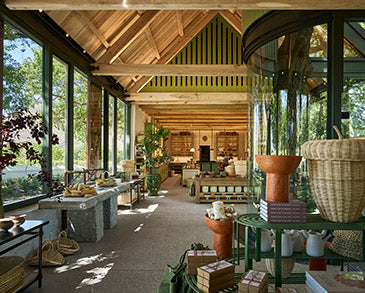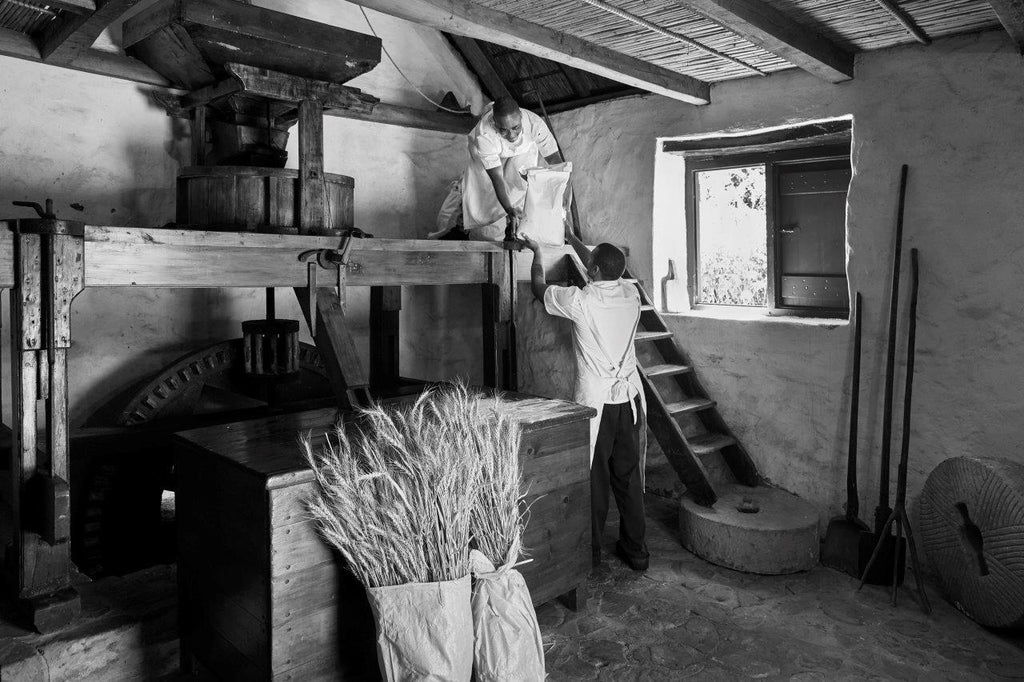Grinding grain to flour
At the watermill, the power of running water from a stream turns the wheel and gears, which rotates a running millstone that grinds over a static bedstone. Grain is fed through the eye of the stone and crushed by these grinding stones which produces the flour that then flows into a meelkis (flower bin) or bucket.
Millstones:
Stones suitable for millstones were quarried throughout South Africa. Blocks of stones would be dislodged and trimmed to the shape of a millstone. The stones were arranged in pairs with the lower bedstone fixed in the stone’s floor and secured by a sturdy wooden frame. A wooden casing was fastened around the stones. The runner-stone carried on the top of the spindle, rotated clear of the bedstone, and had a hole or eye in the centre through which grain passed to the gaps between the stones. Earlier stones had a diameter of between 70 to 75 cm, but later the usual diameter was 90 cm. Stones with a diameter larger than 120 to 150 cm are rarely seen.
First, a perfectly flat surface was produced, after which the smooth face of the stone was marked out in a pattern which performed the actual grinding, called the dressing. One of the most conventional patterns used in South Arica is called the common dressing, which is divided into several sectors or harps. Each harp is subdivided by a series of parallel furrows separated by lands. The deep edge of the furrows was first cut by a pick, after which the other edge was dressed by a mill bill to slope gently up to the land. Finally, a series of fine parallel grooves, known as stitching or cracking, was cut on the lands. Another common pattern was the sickle dressing with curved lines originating from the eye of the stone.
For grinding flour, harder stones were used and often imported from France. The fitness of the flour depended on three factors: the speed at which the stones rotated, the rate at which grain was fed to the stones and the gap between the runner stone and the bedstone. A millstone lasts on average 40 years.
In comparison to modern steel rollers found in current-day electric-powered roller mills, traditional millstone grinding produces a creamier flour and a richer and more flavourful bread. Although steel rollers do not wear and remove the kernel from the husk, they do separate and expel the wheat germ. Traditional milling crushes and preserves the germ. Although its oil often makes the flour spoil more quickly, the germ also presents the jewel of the wheat grain. Therefore, although the shelf life of the flower is reduced, every drop of flavour and nutrition is extracted during traditional millstone grinding.














